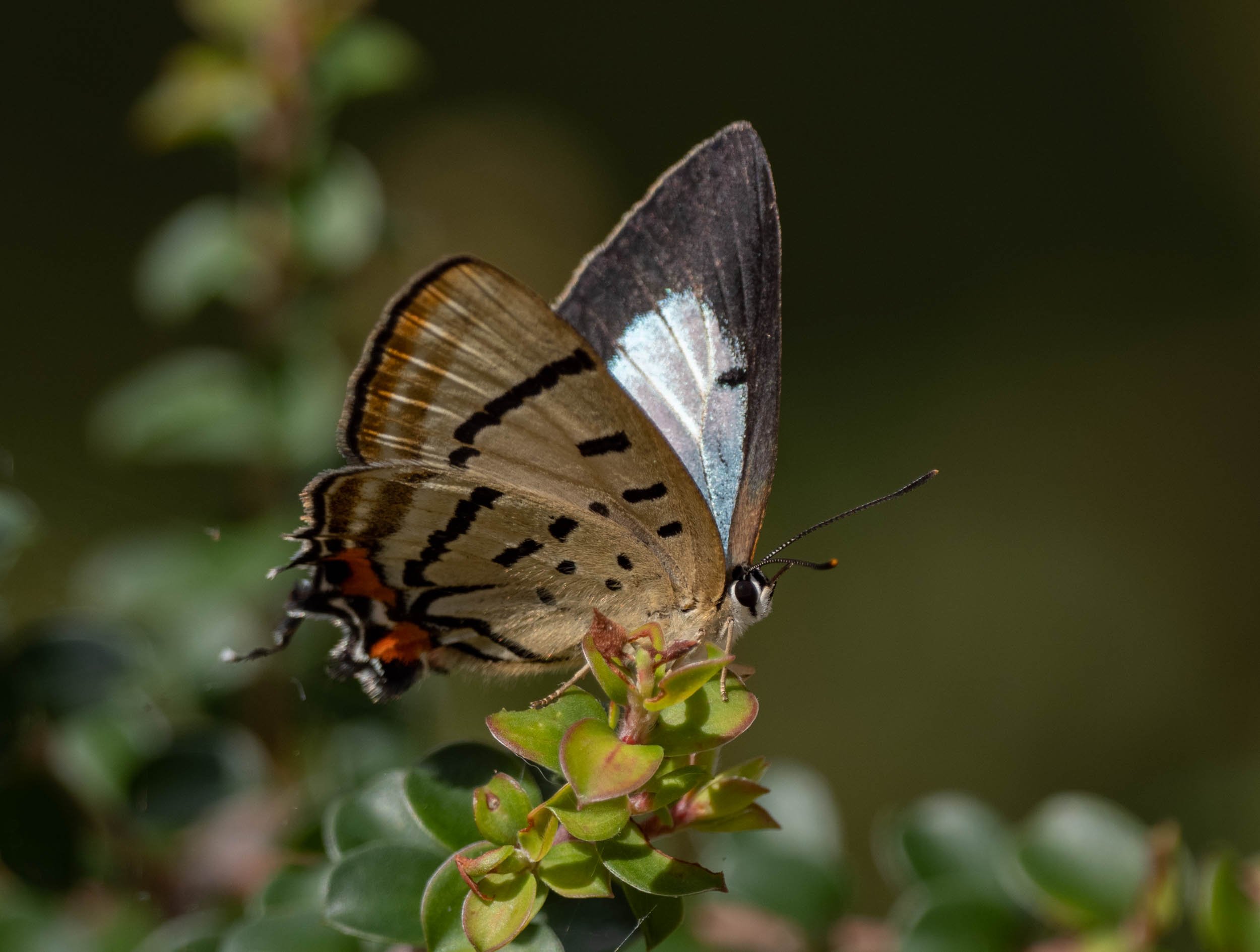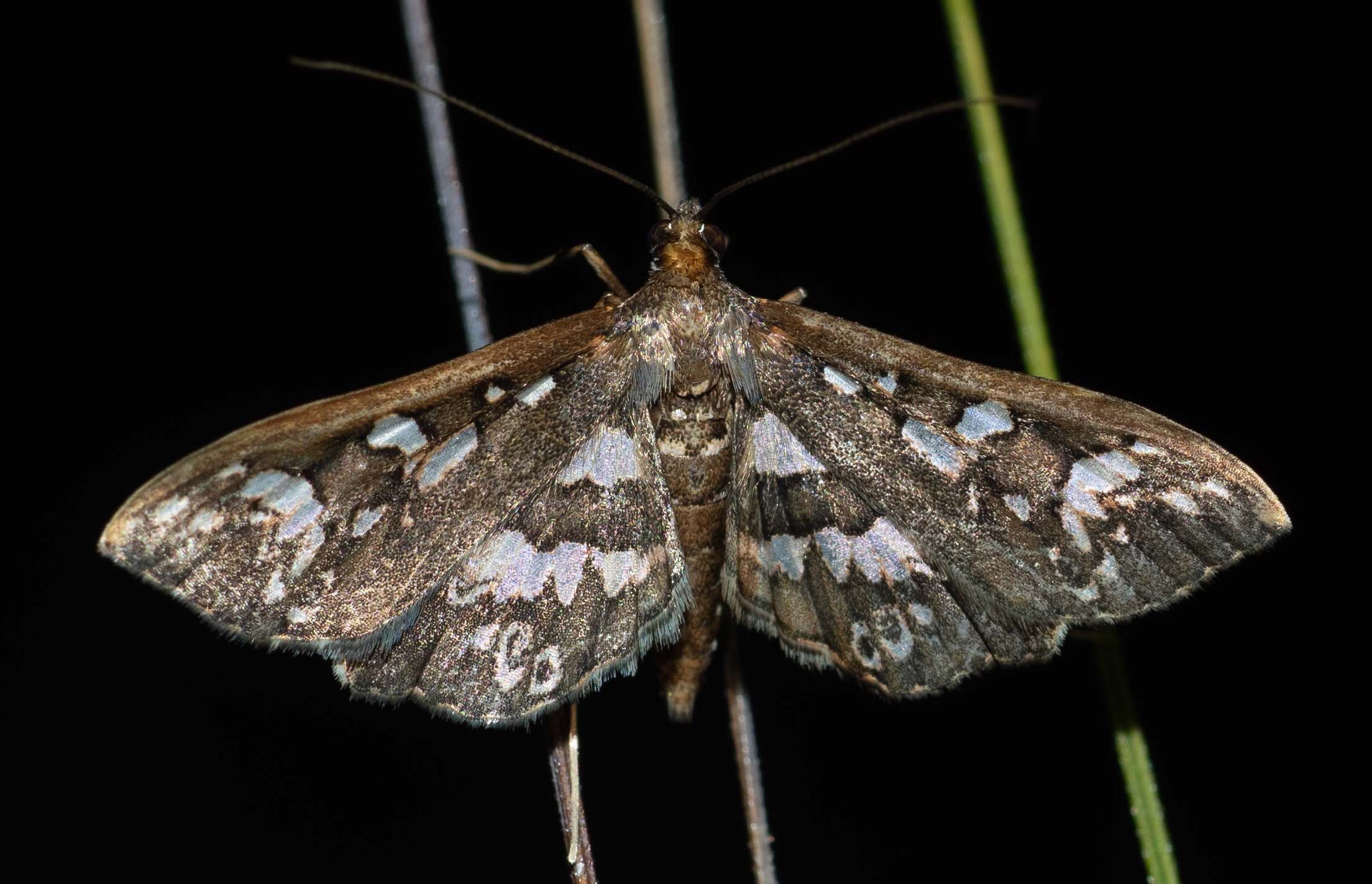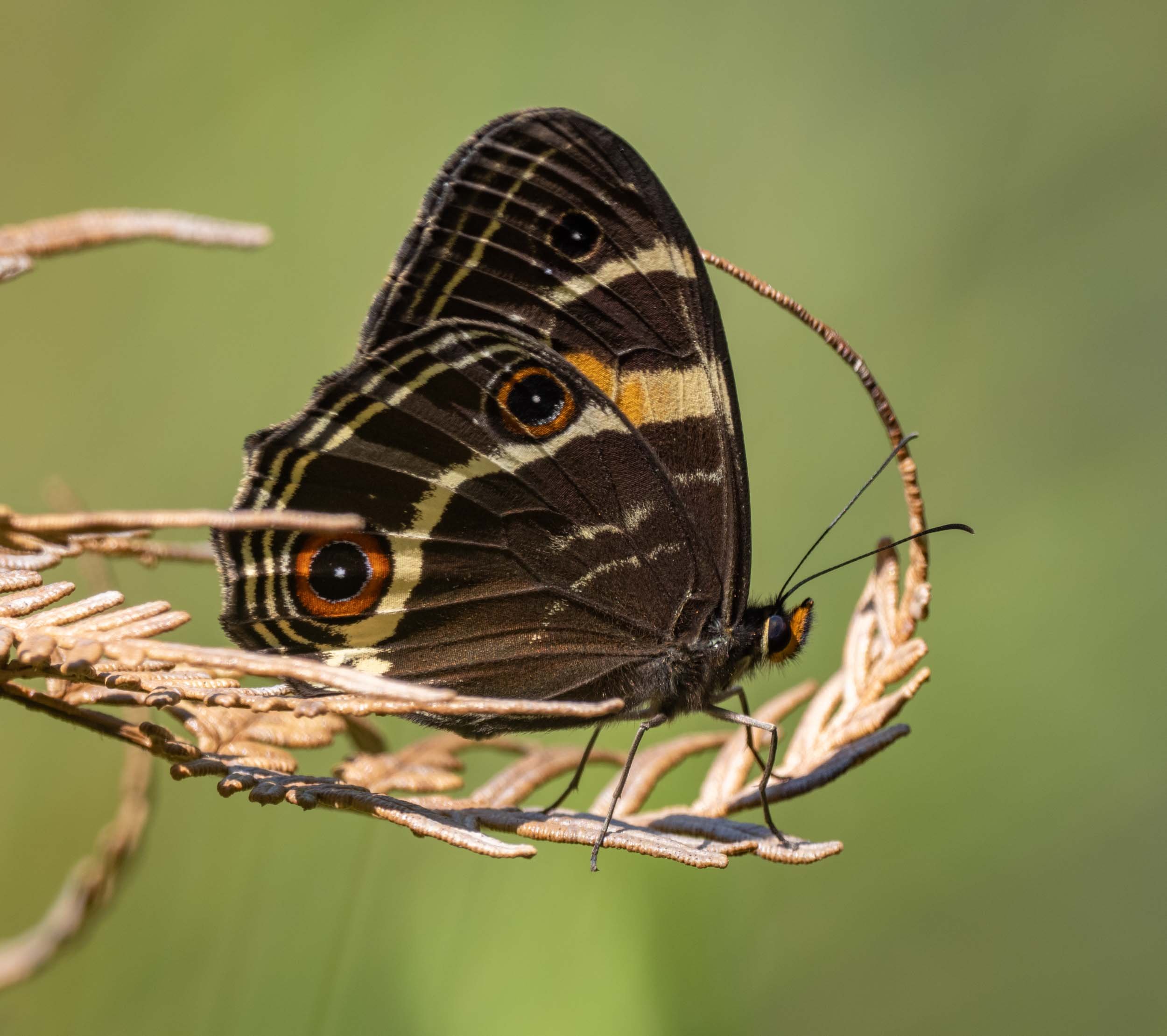
Whistling Moth
Hecatesia fenestrata
We came across this moth on a late night ramble through the forest. Males, like this one, have a ribbed patch near the costa of the forewing, which lacks scales. They rub this against a small protrusion to make their eponymous sound - presumably to attract females. The caterpillars feeds on Devil’s Twine, Cassytha.

Yellow-spotted Blue
Candalides xanthospilos

Black Spot Moth
Epicoma melanospila

Splendid Ochre
Trapezites symmomus
The largest skipper we see, and arguably the most attractive.

another Splendid Ochre
Trapezites symmomus

Imperial Hairstreak
Jalmenus evagoras

Imperial Hairstreak colony
Jalmenus evagorus
The caterpillars are making a meal of this ‘Black Wattle’, protected by large numbers of attendant ants. Many have pupated, and the oldest have eclosed … so the bush is surrounded by fluttering butterflies. We tend to prefer ‘butterfly bush’ as a common name for Acacia mearnsii.

Green Grass-Dart
Ocybadistes walkeri
A common, very small butterfly feeding on the even smaller flowers of Cassytha.

Green Grass-Dart
Ocybadistes walkeri

Mustard Ghost Moth
Abantiades hyalinatus
This lovely big moth made an appearance on our February light sheet. This shot shows its eponymously coloured hindwings.

Mustard Ghost Moth
Abantiades hyalinatus
While it was attracted to the lightsheet, this moth also fluttered around in the vegetation nearby. It is one of the largest members of the ghost moth family (Hepidalidae).

Mustard Ghost Moth pupal case
Abantiades hyalinatus
We found this next to a large hole, from which we presume the adult emerged from its pupal case. The larvae of this moth probably bore vertical holes in the ground to feed on the roots of eucalypt saplings and pupate in that tunnel.

Dodonaea Moth
Parosteodes fictiliaria
The food plant for the caterpillar of this species is Dodonaea which just happens to be one of the most common shrubs in our forest. Probably no coincidence!

Pearl Moth
Ischnurges illustralis

Common Anthelid Moth
Anthela acuta
This moth often comes to lightsheets - seen between August and March. It comes in a variety of colours, from the yellowish shown here to whitish to reddish brown.

Geometer moth
Parepisparis excusata
This species often rests as shown here - with its abdomen twisted to the side and its hindwings hidden behind outstretched forewings. Its larvae feed on Eucalyptus spp.

Geometer moth
Parepisparis excusata
This view from beneath shows the hindwings neatly placed directly behind the forewings.

Blotched Dusky-Blue
Erina acasta
At first glance this looked like our common blue (Erina hyacinthina), but it’s actually a species we’ve not seen here before. Larval food plant? Cassytha. And that’s a plant we currently have rather a lot of!

Varied Sword-grass Brown
Tisiphone abeona
More common than usual this year, perhaps due to the healthy crop of Gahnia that has established in the past few, wet years.

Painted Apple Moth
Orgyia anartoides
Feeding on the wattle Acacia terminalis. Many of the thousands of these wattle bushes which sprang up after the fire are now showing the ill effects of attention from herbivores like this.

Ringed Xenica
Geitoneura acantha
Not a common species here, perhaps due to our elevation. They are generally found in foothills of mountain ranges.





















